Tula
Тула | |
|---|---|
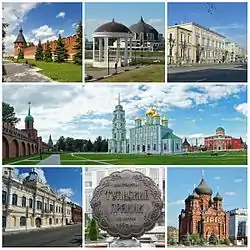 Up: Kremlin, Museum of Weapons, Assembly of the Nobility. Center: Cathedral of the Assumption of the Blessed Virgin Mary. Down: Cathedral of the Dormition at Uspensky Convent, Monument to gingerbread on Lenin Square, Administrative and production building for gingerbread trade | |
 Flag  Coat of arms | |
Location of Tula | |
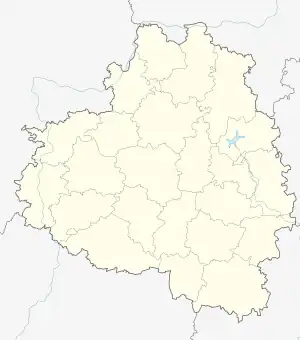 Tula Location of Tula .svg.png.webp) Tula Tula (European Russia) 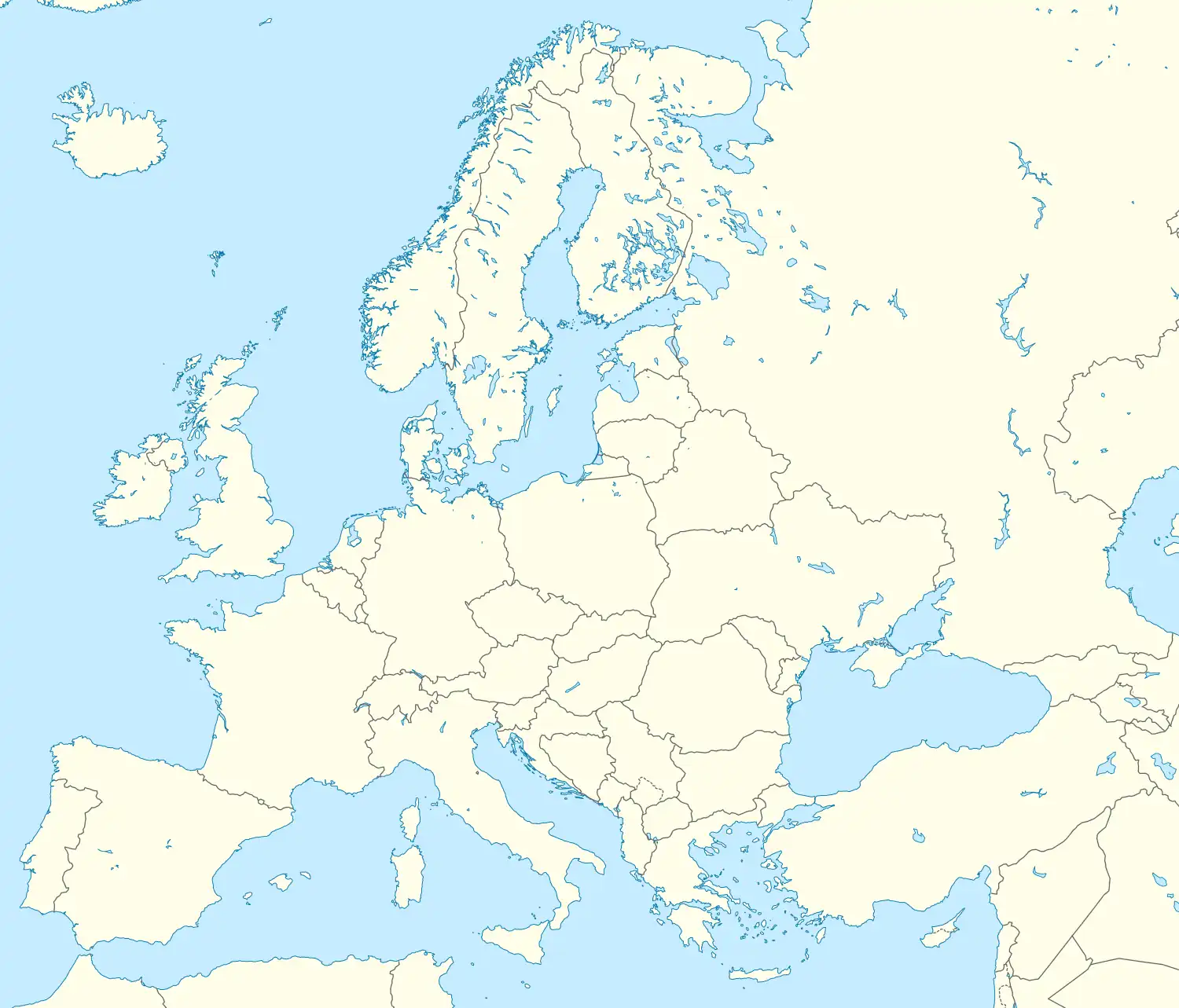 Tula Tula (Europe) | |
| Coordinates: 54°12′N 37°37′E / 54.200°N 37.617°E | |
| Country | Russia |
| Federal subject | Tula Oblast[1] |
| First mentioned | 1146[2] |
| Government | |
| • Body | City Duma[3] |
| • Mayor[4] | Olga Slyusareva[5] |
| Area | |
| • Total | 153.52 km2 (59.27 sq mi) |
| Elevation | 170 m (560 ft) |
| Population | |
| • Total | 501,169 |
| • Estimate (2018)[8] | 482,873 (−3.7%) |
| • Rank | 37th in 2010 |
| • Density | 3,300/km2 (8,500/sq mi) |
| • Subordinated to | Tula City Under Oblast Jurisdiction[1] |
| • Capital of | Tula Oblast,[1] Tula City Under Oblast Jurisdiction[1] |
| • Urban okrug | Tula Urban Okrug[9] |
| • Capital of | Tula Urban Okrug[9] |
| Time zone | UTC+3 (MSK |
| Postal code(s)[11] | 300000–300999 |
| Dialing code(s) | +7 4872[12] |
| OKTMO ID | 70701000001 |
| Website | www |
Tula (Russian: Тула, IPA: [ˈtulə]) is the largest city and the administrative center of Tula Oblast in Russia, located 193 kilometers (120 mi) south of Moscow. Tula is located in the northern Central Russian Upland on the banks of the Upa River, a tributary of the Oka. At the 2010 census, Tula had a population of 501,169, an increase from 481,216 in 2002, making it the 32nd-largest city in Russia by population.
| Year | Pop. | ±% |
|---|---|---|
| 1897 | 115,000 | — |
| 1926 | 150,331 | +30.7% |
| 1939 | 272,224 | +81.1% |
| 1959 | 315,639 | +15.9% |
| 1970 | 461,965 | +46.4% |
| 1979 | 514,008 | +11.3% |
| 1989 | 539,980 | +5.1% |
| 2002 | 481,216 | −10.9% |
| 2010 | 501,169 | +4.1% |
| 2021 | 473,622 | −5.5% |
| Source: Census data | ||
A primarily industrial city, Tula was a fortress at the border of the Principality of Ryazan. The city was seized by Ivan Bolotnikov during the Time of Troubles and withstood a four-month siege by the Tsar's army. Historically, Tula was a major centre for the manufacture of armaments. The Demidov family built the first armament factory in Russia in the city, in what would become the Tula Arms Plant, which still operates to this day.
Tula is home to the Klokovo air base, Tula State University, the Tula Kremlin, Tula State Museum of Weapons, and Kazanskaya Embankment. Tula has a historical association with the samovar, a metal container used to heat and boil water; the city was a major center of Russian samovar production. Yasnaya Polyana, the former home of the writer Leo Tolstoy, is located 12 kilometres (7.5 mi) southwest of Tula. Additionally, Tula is known for its imprinted gingerbread (pryanik),[13] which has been made in Tula since the 17th century.
Etymology
The name of the city is likely pre-Russian, probably of Baltic origin.[14][15][16]
History
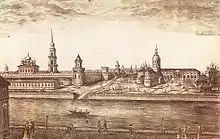
Tula was first mentioned in the Nikon Chronicle (year 1146).[2][17]
In the Middle Ages, Tula was a minor fortress at the border of the Principality of Ryazan. As soon as it passed to the Grand Duchy of Moscow, a brick citadel, or kremlin, was constructed in 1514–1521.[18] It was a key fortress of the Great Abatis Belt and successfully resisted a siege by the Tatars in 1552. In 1607, Ivan Bolotnikov and his supporters seized the citadel and withstood a four-months siege by the Tsar's army. In the 18th century, some parts of the kremlin walls were demolished. Despite its archaic appearance, the five-domed Assumption Cathedral in the kremlin was built as late as 1764.
In 1712, Tula was visited by Peter the Great, who commissioned the Demidov blacksmiths to build the first armament factory in Russia. Several decades later, Tula was turned by the Demidovs into the greatest ironworking center of Eastern Europe. The oldest museum in the city, showcasing the history of weapons, was inaugurated by the Demidovs in 1724, and Nicholas-Zaretsky Church in the city houses their family vault. The first factory to produce samovars industrially was also established there in the course of the 18th century. After the Demidovs moved the center of their manufacture to the Urals, Tula continued as a center of heavy industry, particularly in the manufacture of matériel.
In the 1890s, Ivan Savelyev, a medical orderly, became the founder of social democracy in Tula and set up a workers' study circle.[19]
During World War II, the city was important in the production of armaments. Tula became the target of a German offensive to break Soviet resistance in the Moscow area between 24 October and 5 December 1941. According to Erik Durschmied in The Weather Factor: How Nature has Changed History, one German general reached the southwestern outskirts of Tula on 29–30 October 1941. [20]
The heavily fortified city held out, however, and Guderian's Second Panzer Army was stopped near Tula. The city secured the southern flank during the Battle of Moscow and the subsequent counter-offensive. Tula was awarded the title Hero City in 1976. It is home to the Klokovo air base and the Tula Arms Plant.
Administrative and municipal status
Tula serves as the administrative center of the oblast.[1] Within the framework of administrative divisions, it is incorporated as Tula City Under Oblast Jurisdiction—an administrative unit with the status equal to that of the districts.[1] As a municipal division, the territories of Tula City Under Oblast Jurisdiction and of Leninsky District are incorporated as Tula Urban Okrug.[9][21]
Mayors
- Sergey Kazakov (1997–2005)
- Vladimir Mogilnikov (2005–2010)
- Alisa Tolkachyova (2010–2011)
- Yevgeny Avilov (2011–2012)
- Aleksandr Prokopuk (2012–2014)
- Yuri Tskipuri (2014–2019)
- Olga Slyusareva (2019–present time)
Economy
For more than four centuries Tula has been known as a center of crafts and metalworking. Tula is a developed industrial center. Importance in the industrial structure of Tula are metallurgy, machinery and metal with a high share of the military-industrial complex and food manufacturing.
Armaments industry
- Almaz-Antey Concern: Scientific Production Association Strela (Russian: ОАО НПО «Стрела»)
- Splav (Russian: ОАО НПО «СПЛАВ») part of the Techmash holding of Rostec; only manufacturer of multiple rocket launchers in Russia: BM-21 Grad, BM-27 Uragan, BM-30 Smerch
- KBP Instrument Design Bureau
- Shcheglovsky Val plant (Russian: «Щегловский вал» завод): manufacturer of the Bumerang-BM for the T-15 Armata
- Tactical Missiles Corporation: TsKBA (Russian: ОАО «ЦКБА»)
- Tula Arms Plant
- Tulamashzavod
- Tula Cartridge Plant
Other companies
- Shtamp Machine-Building Plant
- Oktava
- Yasnaya Polyana: a confectionery factory established in 1973 under the holding of United Confectioners (Russian: Холдинг «Объединенные кондитеры») that produces 340 different candies including "Yasnaya Polyana"[22]
Culture
_02.jpg.webp)
A musical instrument, the Tula accordion, is named after the city, which is a center of manufacture for such instruments sold throughout Russia and the world. Tula is also renowned for traditional Russian pryanik, cookies made with honey and spices (see Tula pryanik). In the West, Tula is perhaps best known as the center of arms manufacturing, mainly by TT pistol, as well as samovar production: the Russian equivalent of "coals to Newcastle" is "You don't take a samovar to Tula". (The saying is falsely ascribed to the writer and playwright Anton Chekhov, whose made a satirical portrait of one of his characters saying "Taking your wife to Paris is the same as taking your own samovar to Tula".)
The most popular tourist attraction in Tula Oblast is Yasnaya Polyana, the home and burial place of the writer Leo Tolstoy. It is situated 14 kilometres (8+1⁄2 miles) southwest of the city. It was here that Tolstoy wrote his celebrated novels War and Peace and Anna Karenina. The largest public park in Tula is the P. Belousov Central Park of Culture and Recreation.
Education
Tula is home to:
- Tula State University
- Tula State Pedagogical University[23]
- The Tula artillery and Engineering Institute
- A branch of All Russia Economic and Finance Institute
- A branch of Moscow Economics and Management Institute
Transportation
Since 1867, there has been a railway connection between Tula and Moscow.[24] Tula is a major railway junction with trains to Moscow, Oryol, Kursk and Kaluga. The Moscow to Simferopol M2 motorway runs past the city. City transport is provided by trams, trolleybuses, buses, and marshrutkas. Tula trams, trolleybuses, and bus routes are operated by "Tulgorelectrotrans" (Tula city electrotransport company). Klokovo (air base) of the Russian Air Force is located nearby.
Religion
Most of Tula's churches are Russian Orthodox churches. Next in number are Protestants and Catholics. Non-Christian organizations that are present include Muslims, Jews, Hare Krishna, Buddhists and Taoists.
All Orthodox organizations in Tula and the Tula Oblast are included in the Diocese of Tula and Yefremov. Among the Tula Orthodox churches should be mentioned Saints Cathedral (1776-1800), the oldest church in Tula - Annunciation (1692) and the Assumption Cathedral of the Tula Kremlin (1762-1764). There is also the Shcheglovsky Monastery of Holy Mother of God, built in mid 19th century and consecrated in 1860.[25] In Tula also Old Believers' community services which are performed in the church of St. John Chrysostom.
In Tula there is the only Catholic church in the area, the Holy Apostles Peter and Paul. Since the 1990s, Tula has several Protestant denominations, the largest church of which is a Baptist church with a prayer house in Tula. Representatives of other Protestant churches in Tula are Seventh-day Adventists, Presbyterians (Church of the Holy Trinity, The Glorious Jesus the Lord, the Good News), Pentecostals (Tula Christian Center, Church of the New Testament) and other evangelical churches (Word of Life, the Vine Gypsy Church).
Also the city has a synagogue and the Jewish Community House.
Sports
In Russian fist fighting, Tula was considered to have some of the most famous fighters.[26][27]
The city association football club, FC Arsenal Tula, played in the Russian Premier League in 2014/2015 and 2016/2017 seasons.
People
Arts
- Leo Tolstoy (1828-1910), Writer
- Leonid Bobylev (born 1949), composer
- German Galynin (1922–1966), composer
- Vladimir Mashkov (born 1963), theater and film actor and director
- Vyacheslav Nevinny (1934–2009), theater and film actor
- Maria Ouspenskaya (1876–1949), actress and acting teacher
- Vsevolod Sanayev (1912–1996), theater and film actor, acting teacher
- Sofia Sotnichevskaya (1916–2011), actress
- Irina Skobtseva (1927–2020), actress
- Gleb Uspensky (1843–1901), writer
- Vikenty Veresaev (1867–1945), writer
- Alexey Vorobyov (born 1988), singer, actor and model
- Alexey Goloborodko (born 1994), dance contortionist
Public services
- Vyacheslav Dudka (born 1960), governor of Tula Oblast (2005–2011)
- Vladimir Ivanov (1893–1938), Soviet politician
- Yury Afonin, politician
- Viktor Ilyich Baranov, Soviet Army lieutenant general
- Ivan Bakhtin, governor of the Kharkov Governorate
Sciences, technologies
- Nikolay Artemov (1908–2005) physiologist
- Vladimir Bazarov (1874–1939), philosopher and economist
- Vasily Degtyaryov (1880–1949), weapons engineer
- Valery Legasov (1936–1988), inorganic chemist
- Valery Polyakov (1942-2022), cosmonaut
- Ivan Sakharov (1807–1863), folklorist, ethnographer
- Petr Sushkin (1868–1928), ornithologist
- Sergei Tokarev (1899–1985), historian, ethnographer
Sports
- Ksenia Afanasyeva (born 1991), Olympic artistic gymnast, world and European champion
- Evgeniya Augustinas (born 1988), racing cyclist, European champion
- Ekaterina Gnidenko (born 1992), track cyclist
- Yevgeny Grishin (1931–2005), speedskater, Olympic and European champion
- Oksana Grishina (born 1968), track cyclist
- Irina Kirillova (born 1965), volleyball player, Olympic, world and European champion
- Sergei Kopylov (born 1960), racing cyclist
- Alexander Kotov (1913–1981), chess player, international grandmaster, SSSR champion, author, mechanical engineer
- Viktor Kudriavtsev (born 1937), figure skating coach
- Andrey Kuznetsov (born 1991), tennis player
- Vladimir Leonov (born 1937), cyclist
- Valentina Maksimova (born 1937), track cyclist
- Ihor Nadein (1948–2014), football player and coach
- Nikolay Novikov, (born 15 May 1946), boxer
- Alexandra Obolentseva (born 2001), chess player
- Yelena Posevina (born 1986), rhythmic gymnast, Olympic, world and European champion
- Anastasia Voynova (born 1993), racing cyclist, world and European champion
Others
- Nikita Demidov (1656–1725), industrialist, founder of Demidov dynasty
Climate
Tula has a humid continental climate,[28] featuring warm summers, and cold, but not particularly severe winters by Russian standards.
| Climate data for Tula (1991–2020, extremes 1897–present) | |||||||||||||
|---|---|---|---|---|---|---|---|---|---|---|---|---|---|
| Month | Jan | Feb | Mar | Apr | May | Jun | Jul | Aug | Sep | Oct | Nov | Dec | Year |
| Record high °C (°F) | 7.0 (44.6) |
7.3 (45.1) |
19.0 (66.2) |
29.0 (84.2) |
33.2 (91.8) |
35.0 (95.0) |
39.0 (102.2) |
39.2 (102.6) |
30.0 (86.0) |
23.6 (74.5) |
17.8 (64.0) |
9.3 (48.7) |
39.2 (102.6) |
| Mean daily maximum °C (°F) | −4.2 (24.4) |
−3.4 (25.9) |
2.5 (36.5) |
11.9 (53.4) |
19.6 (67.3) |
22.8 (73.0) |
25.1 (77.2) |
23.6 (74.5) |
17.3 (63.1) |
9.6 (49.3) |
1.6 (34.9) |
−2.7 (27.1) |
10.3 (50.5) |
| Daily mean °C (°F) | −6.9 (19.6) |
−6.7 (19.9) |
−1.5 (29.3) |
6.8 (44.2) |
13.8 (56.8) |
17.2 (63.0) |
19.5 (67.1) |
17.7 (63.9) |
12.0 (53.6) |
5.8 (42.4) |
−0.8 (30.6) |
−5.0 (23.0) |
6.0 (42.8) |
| Mean daily minimum °C (°F) | −9.7 (14.5) |
−10.1 (13.8) |
−5.3 (22.5) |
1.8 (35.2) |
7.9 (46.2) |
11.6 (52.9) |
14.0 (57.2) |
12.2 (54.0) |
7.4 (45.3) |
2.5 (36.5) |
−3.1 (26.4) |
−7.5 (18.5) |
1.8 (35.2) |
| Record low °C (°F) | −42.0 (−43.6) |
−38.0 (−36.4) |
−32.2 (−26.0) |
−19.0 (−2.2) |
−4.3 (24.3) |
1.9 (35.4) |
4.0 (39.2) |
−1.1 (30.0) |
−6.8 (19.8) |
−13.0 (8.6) |
−26.3 (−15.3) |
−37.0 (−34.6) |
−42.0 (−43.6) |
| Average precipitation mm (inches) | 43 (1.7) |
38 (1.5) |
35 (1.4) |
40 (1.6) |
48 (1.9) |
76 (3.0) |
77 (3.0) |
60 (2.4) |
57 (2.2) |
55 (2.2) |
41 (1.6) |
45 (1.8) |
615 (24.2) |
| Average extreme snow depth cm (inches) | 18 (7.1) |
29 (11) |
23 (9.1) |
2 (0.8) |
0 (0) |
0 (0) |
0 (0) |
0 (0) |
0 (0) |
0 (0) |
3 (1.2) |
10 (3.9) |
29 (11) |
| Average rainy days | 5 | 5 | 6 | 12 | 13 | 16 | 15 | 13 | 13 | 15 | 12 | 6 | 131 |
| Average snowy days | 21 | 22 | 15 | 4 | 0.2 | 0 | 0 | 0 | 0.3 | 4 | 13 | 21 | 101 |
| Average relative humidity (%) | 85 | 82 | 76 | 67 | 64 | 70 | 72 | 74 | 78 | 82 | 86 | 86 | 77 |
| Mean monthly sunshine hours | 37.2 | 72.8 | 142.6 | 207.0 | 285.2 | 279.0 | 294.5 | 279.0 | 180.0 | 93.0 | 36.0 | 31.0 | 1,937.3 |
| Source 1: Pogoda.ru.net[29] | |||||||||||||
| Source 2: Climatebase (sun, 1959–2011)[30] | |||||||||||||
Twin towns – sister cities
 Albany, United States
Albany, United States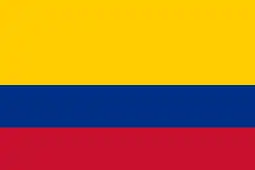 Barranquilla, Colombia
Barranquilla, Colombia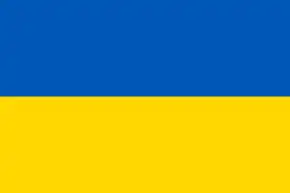 Kerch, Ukraine/Crimea
Kerch, Ukraine/Crimea Mogilev, Belarus
Mogilev, Belarus Villingen-Schwenningen, Germany
Villingen-Schwenningen, Germany
References
Notes
- 1 2 3 4 5 6 7 Law #954-ZTO
- 1 2 Tokarev, Kirill (October 4, 2011). "Tula: Loved by Tolstoy, hated by Lenin". Russia & India Report. Russia Beyond the Headlines. Retrieved August 31, 2016.
- ↑ Official website of the Tula City Duma (in Russian)
- ↑ "Новым мэром Тулы стал Юрий Цкипури". September 29, 2014.
- ↑ "Мэром Тулы стала олимпийская чемпионка Ольга Слюсарева". September 27, 2019.
- ↑ Генеральный план города Тулы
- ↑ Russian Federal State Statistics Service (2011). Всероссийская перепись населения 2010 года. Том 1 [2010 All-Russian Population Census, vol. 1]. Всероссийская перепись населения 2010 года [2010 All-Russia Population Census] (in Russian). Federal State Statistics Service.
- ↑ "26. Численность постоянного населения Российской Федерации по муниципальным образованиям на 1 января 2018 года". Federal State Statistics Service. Retrieved January 23, 2019.
- 1 2 3 Law #553-ZTO
- ↑ "Об исчислении времени". Официальный интернет-портал правовой информации (in Russian). June 3, 2011. Retrieved January 19, 2019.
- ↑ Почтовые индексы России
- ↑ Деловой город: Телефонный код Тулы
- ↑ "Gingerbread Tula | Tula, Russia Activities". Lonely Planet. Retrieved April 30, 2020.
- ↑ Е. М. Поспелов. "Географические названия мира". Москва: Русские словари, 1998, pg. 423: "The earliest etymologies derived the place name from Russian dialectal tulá 'hidden, unreachable place'... The pre-Russian origin of the name of the river and town is no longer doubted [Maiorova 1985].... Since the name of the river Upa is certainly Baltic..., its tributary *Tula [the presumed earlier form of Tulitsa] may also be of Baltic origin, which is supported by a series of parallels in Lithuanian toponymy: the river Tule, the Tulis swamp, the Tulyte field, the meadow Tulejos, the valley Tulija, etc. [Vanagas, 1981]; the meaning of these toponyms is not entirely clear...."
- ↑ "VedicTime: Тула".
- ↑ "Тула-один из сакрально-потаённых центров на русской карте".
- ↑ "Tula". Encyclopedia Britannica.
- ↑ "Тула". Great Soviet Encyclopedia. Moscow.
- ↑ Biggart, John (1989). Alexander Bogdanov, Left-Bolshevism and the Proletkult 1904–1932 (Ph.D.). University of East Anglia. OCLC 556500696.
- ↑ Arcade Publishing, 2002; ISBN 1-55970-624-4
- ↑ All rural localities included as a part of Tula Urban Okrug in Law #553-ZTO are listed as a part of Leninsky District in OKATO.
- ↑ Тульская кондитерская фабрика «Ясная Поляна» [Tula confectionary factory "Yasnaya Polyana"] (in Russian). Объединённые кондитеры (United Confectioners). Retrieved March 19, 2018.
- ↑ "ТГПУ им. Л.Н.Толстого :: Главная страница". Archived from the original on September 26, 2009. Retrieved September 10, 2009.
- ↑ Train Station in Tula (in Russian)
- ↑ Kamalakaran, A. (July 29, 2016). "4 Orthodox monasteries to visit near Moscow". Russia Beyond the Headlines. Retrieved January 29, 2020.
- ↑ Русский кулачный бой: "Tula's fighters were always glorious, but every place had its heroes."
- ↑ Сказания о русских народных играх "Tula's fighters were considered the best one on one."
- ↑ "Tula, Russia Köppen Climate Classification". Weatherbase. Retrieved January 25, 2015.
- ↑ "Weather and Climate-The Climate of Tula" (in Russian). Погода и климат. Retrieved November 8, 2021.
- ↑ "Tula Climate Normals". Climatebase. Retrieved April 5, 2016.
- ↑ "Города-побратимы". tula.ru (in Russian). Tula. Retrieved February 2, 2020.
Sources
- Тульская областная Дума. Закон №954-ЗТО от 27 декабря 2007 г. «Об административно-территориальном устройстве Тульской области», в ред. Закона №2131-ЗТО от 11 июня 2014 г. «О внесении изменений в Закон Тульской области "Об административно-территориальном устройстве Тульской области" и Закон Тульской области "Об установлении границ административно-территориальных единиц – районов в городе Туле"». Вступил в силу по истечении десяти дней после дня официального опубликования. Опубликован: "Вестник Тульской областной Думы", №11–12(142–143), часть 4, ноябрь–декабрь 2007 г.. (Tula Oblast Duma. Law #954-ZTO of December 27, 2007 On the Administrative-Territorial Structure of Tula Oblast, as amended by the Law #2131-ZTO of June 11, 2014 On Amending the Law of Tula Oblast "On the Administrative-Territorial Structure of Tula Oblast" and the Law of Tula Oblast "On Establishing the Borders of the Administrative-Territorial Units–the Districts in the City of Tula". Effective as of the day which is ten days after the official publication date.).
- Тульская областная Дума. Закон №553-ЗТО от 11 марта 2005 г. «О переименовании "муниципального образования город Тула Тульской области", установлении границы муниципального образования город Тула и наделении его статусом городского округа», в ред. Закона №2133-ЗТО от 11 июня 2014 г. «Об объединении муниципальных образований, расположенных на территории Ленинского района Тульской области, с муниципальным образованием город Тула, о внесении изменений в Закон Тульской области "О переименовании "муниципального образования город Тула Тульской области", установлении границы муниципального образования город Тула и наделении его статусом городского округа" и признании утратившими силу отдельных законодательных актов (положений законодательных актов) Тульской области». Вступил в силу через десять дней после официального опубликования. Опубликован: "Тульские известия", №66–69, 22 марта 2005 г. (Tula Oblast Duma. Law #553-ZTO of March 11, 2005 On Renaming "Municipal Formation of the City of Tula of Tula Oblast", Establishing the Border of the Municipal Formation of the City of Tula, and on Granting It Urban Okrug Status, as amended by the Law #2133-ZTO of June 11, 2014 On the Merger of the Municipal Formations on the Territory of Leninsky District of Tula Oblast with the Municipal Formation of the City of Tula, on Amending the Law of Tula Oblast "On Renaming "Municipal Formation of the City of Tula of Tula Oblast", Establishing the Border of the Municipal Formation of the City of Tula, and on Granting It Urban Okrug Status", and on Abrogating Various Legislative Acts (Clauses of Legislative Acts) of Tula Oblast. Effective as of the day ten days after the official publication.).
- Государственный комитет Российской Федерации по статистике. Комитет Российской Федерации по стандартизации, метрологии и сертификации. №ОК 019-95 1 января 1997 г. «Общероссийский классификатор объектов административно-территориального деления. Код 71», в ред. изменения №278/2015 от 1 января 2016 г.. (State Statistics Committee of the Russian Federation. Committee of the Russian Federation on Standardization, Metrology, and Certification. #OK 019-95 January 1, 1997 Russian Classification of Objects of Administrative Division (OKATO). Code 71, as amended by the Amendment #278/2015 of January 1, 2016. ).
Further reading
- Annette M. B. Meakin (1906). "Tula". Russia, Travels and Studies. London: Hurst and Blackett. OCLC 3664651. OL 24181315M.
- . Encyclopædia Britannica. Vol. 27 (11th ed.). 1911. pp. 365–366.
- . Encyclopædia Britannica. Vol. 27 (11th ed.). 1911. p. 366.
External links
- Map: Battle of Tula 1941
- . . 1914.




